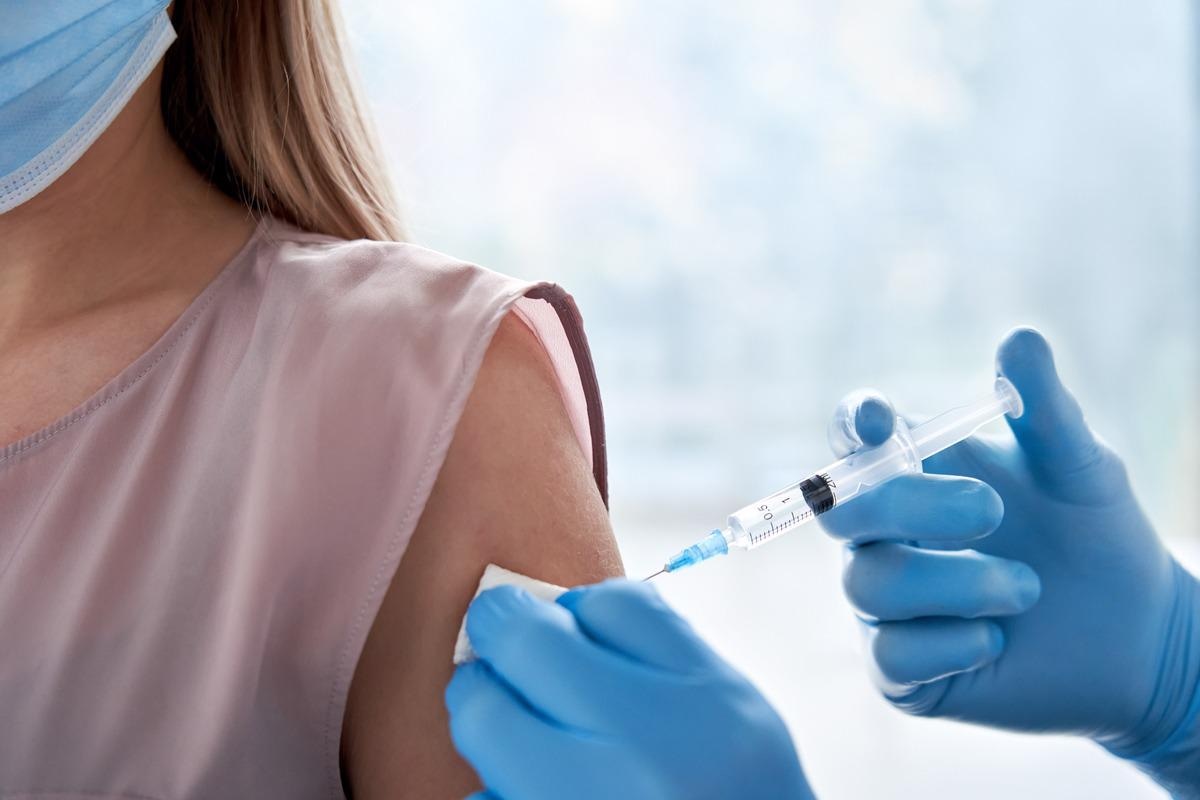A recent article posted to the bioRxiv* preprint server analyzed multivalent messenger ribonucleic acid (mRNA)-lipid nanoparticle (LNP) vaccine constructs against certain β-coronaviruses (β-CoVs).
 Study: Induction of neutralizing antibodies against SARS-CoV-2 variants by a multivalent mRNA-lipid nanoparticle vaccine encoding SARS-CoV-2/SARS-CoV Spike protein receptor-binding domains. Image Credit: insta_photos/Shutterstock
Study: Induction of neutralizing antibodies against SARS-CoV-2 variants by a multivalent mRNA-lipid nanoparticle vaccine encoding SARS-CoV-2/SARS-CoV Spike protein receptor-binding domains. Image Credit: insta_photos/Shutterstock

 *Important notice: bioRxiv publishes preliminary scientific reports that are not peer-reviewed and, therefore, should not be regarded as conclusive, guide clinical practice/health-related behavior, or treated as established information.
*Important notice: bioRxiv publishes preliminary scientific reports that are not peer-reviewed and, therefore, should not be regarded as conclusive, guide clinical practice/health-related behavior, or treated as established information.
Background
Severe acute respiratory syndrome coronavirus (SARS-CoV), the Middle East respiratory syndrome-related CoV (MERS-CoV), and severe acute respiratory syndrome coronavirus (SARS-CoV-2) are all β-CoVs with significant fatality rates across the world. The experience with the Moderna and Pfizer-BioNTech CoV disease 2019 (COVID-19) vaccines based on SARS-CoV-2 mRNA and authorized in 2020/2021 emphasizes the need for the quick deployment of better vaccines for successful control measures.
The advent of highly pathogenic and infectious SARS-CoV-2 variants with improved immune escape has underlined the demand for multivalent vaccines that boost immunity to numerous SARS-CoV-2 variants for the present pandemic and for various members of the β-CoV family more generally.
mRNA vaccines have various benefits relative to inactivated virus or protein-based vaccines, such as the ability to manufacture at a minimal price, speedy design and synthesis, and the provision of real-time clinical data demonstrating the mRNA platform's safety in humans. Multivalent vaccinations harboring broad reactivity are necessary to prevent immune escape and impart immunity against quickly evolving viral variants. According to recent research, the homodimerization of β-CoV receptor-binding domains (RBDs) boosts their immunogenicity and stability. These findings imply that heterodimers or homodimers of distinct β-CoV RBDs may improve their potential to induce cross-reactive cellular and humoral immune responses.
About the study
In the current work, the researchers aimed to develop multivalent Coronaviridae vaccines that could be quickly produced and manufactured. The team evaluated the immunogenicity of mice to the SARS-CoV-2 original strain, multiple variants of concern (VOCs), and SARS-CoV following immunization with four RBD mRNA-LNP vaccine candidates. These vaccination candidates harbored heterodimers or homodimers of SARS-CoV-2/SARS-CoV RBDs encoded by mRNA. The researchers examined how well the vaccinations elicited cross-reactive antibodies against the donor SARS-CoV-2 and SARS-CoV strains and the recently discovered SARS-CoV-2 Beta (B.1.351) and Delta (B.1.617.2) VOCs exhibiting improved immune evasion.
The researchers designed five mRNA frameworks encoding 1) green fluorescent protein (control), 2) SARS-CoV CUHK-W1 RBD (R306– K523), 3) SARS-CoV-2 Wuhan-Hu-1 reference strain RBD (R319-K537), 4) SARS-CoV/SARS-CoV-2 RBD heterodimer, and 5) SARS-CoV-2 RBD homodimer. RBD-encoding mRNAs were transfected to human embryonic kidney 293T (HEK293T) cells and were combined with a lipid mixture tailored to yield LNPs. Dynamic light scattering (DLS) was used to quantify the diameters of various RBD mRNA-LNP batches.
On days 0 and 14, groups of male C57BL/6J mice were inoculated intramuscularly with 10 g of each vaccine in 80 μL phosphate-buffered saline to assess the immunogenicity of the RBD mRNA-LNPs. Mice were bled two weeks following boosting, and sera were tested for antibody generation utilizing SARS-CoV and SARS-CoV-2 pure spike (S) protein-coated plates in direct binding enzyme-linked immunosorbent assays (ELISAs).
Results and conclusion
The study results indicated that the transfection of HEK293T cells with RBD-encoding mRNAs contributed to the high production of each recombinant RBD, as verified by western blot assessment with a cross-reactive anti-SARS-CoV-2/SARS-CoV RBD antibody. This inference indicated that the mRNAs were capable of being translated in vivo. DLS demonstrated minimal batch-to-batch diameter fluctuation and a particle diameter of 120 nm on average, a size that allows for effective cellular absorption and tissue penetration.
Notably, substantial immunoglobulin G (IgG) titers reactive against both S proteins were elicited by the four RBD mRNA-LNP vaccinations. The monomer mRNA-LNPs reacted preferentially against the immunizing S protein as predicted, but the variance in titers was not significant. There was no significant difference in the mean anti-S protein IgG concentrations induced by the SARS-CoV-2 homodimer and monomer mRNA-LNPs. This indicated that dimerization did not boost the SARS-CoV-2 RBD immunogenicity in the setting of these mRNA-LNP vaccines.
Compared to the other three vaccines, the heterodimer mRNA LNP generated a greater anti-SARS-CoV-2 S protein IgG titer and successfully induced antibodies against SARS-CoV S protein. Robust and equivalent IgG1 and IgG2a responses to SARS-CoV-2 S protein were evoked by the heterodimeric mRNA-LNP, indicating balanced type 2 T helper (Th2)/Th1 immune responses.
In mRNA-LNP-immunized animals, the profile of neutralizing antibody generation was identical to that seen with S protein-binding antibodies. As a result, all four RBD mRNA vaccines produced antibodies that efficiently neutralized SARS-CoV-2 and SARS-CoV-based pseudovirus infection in Vero cells. Although the heterodimeric and monomeric SARS-CoV-2 mRNA-LNPs elicited similar S protein-binding IgG responses, the heterodimeric vaccination was more effective at inducing neutralizing antibodies towards both strains.
The neutralizing potential of sera samples from SARS-CoV-2 heterodimeric RBD mRNA-immunized mice decreased by 5.4, 14.5, and 2.3 times against the Beta, Wuhan-E484K, and Wuhan-N501Y pseudoviruses, respectively, relative to the Wuhan pseudovirus. Likewise, neutralizing efficacy against Delta was reduced by 11.7 times in heterodimeric RBD mRNA-induced mouse sera.
To recapitulate, the present study demonstrated that all analyzed vaccine constructs elicited a significant anti-viral antibody response, and the heterodimeric vaccine induced an IgG response adequate for cross-neutralizing SARS-CoV-2 Wuhan-Hu-1, Beta, Delta variants, and SARS-CoV.

 *Important notice: bioRxiv publishes preliminary scientific reports that are not peer-reviewed and, therefore, should not be regarded as conclusive, guide clinical practice/health-related behavior, or treated as established information.
*Important notice: bioRxiv publishes preliminary scientific reports that are not peer-reviewed and, therefore, should not be regarded as conclusive, guide clinical practice/health-related behavior, or treated as established information.